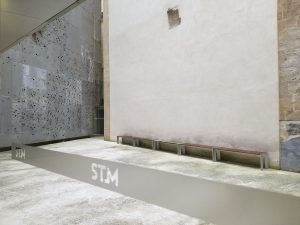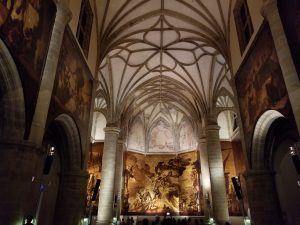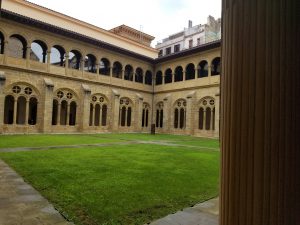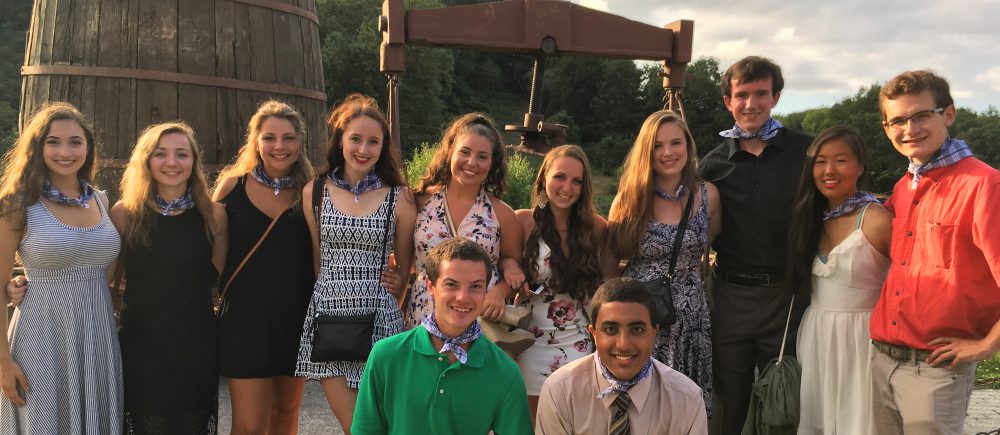
The San Telmo Museum, a history museum depicting the cultural past of the Basque country, sits at the end of the old part of San Sebastian. As a constantly changing society, the Basque Country transforms with a common past and heritage as the basis. To create a better future, the museum visitors learn from the past to understand how the past society faced adversary and took advantage of opportunities.

To eventually become a part of the mountain again, the architect and builders placed holes in the walls to let plant life grow over them.
While only a temporary exhibit, the Greek myth exhibit begins the door to the past and displays pieces of art that depict past beliefs and religions. While the pieces themselves come from later time periods, the subjects in them tell the stories that the Greeks believed. While a different society from the Basques, learning from the Greeks will also help visitors learn from the past.

It darkens during film showings.
What was once a monastery now acts as a museum for people to visit and learn about the history of the area. The area that appears to be a converted cathedral now houses paintings that depict the important roles that people took during the Spanish Civil War and a short film that gives an overview on Basque history. The film depicts both a history lesson and a message for the future.

A courtyard, because why not?
The rest of the museum goes chronologically from prehistoric times, leading up to the present day. Humans have been in the area now known as the Basque Country since prehistoric times. Like other societies, the ancestors of the Basque people eventually settled down and built settlements that once can still find today. Eventually, the Romans occupied the Basque area for materials and strategic location. Eventually, the people formed something akin to clans that one can see today in certain cities. These clans acted as protection against feudal lords.
Whale hunting eventually became a major industry for the Basque country. The whales provided oil and other resources that made life easier. The iron industry also flourished. The surplus amounts of iron, charcoal, water- generated power, and easy access to ports allowed the people to flourish, along with the convenient and strategic location. The iron and need for whales allowed the ship- building industry to grow, as well. With more powerful ships comes an easier time for whale hunting, fishing and more food for the people. Such a development allowed for exploration of the sea.
While some things, such as technological development and the different roles that people had, share similarities to other societies, the history shows the way that the ancestral Basques solved problems, which may or may not be different from other cultures. The personal interpretation would be that the similarities in social growth mean that different people have much in common than one may initially think. For example, the Basque Country had witch trials, similar to the American witch trials that had an impact on the current day trial system. The nomadic settlers who eventually turn to farming and ranching for food also occurs among other societies, as well.
Museums, such as the San Telmo Museum, tell a story of the past that one can learn. To help society to progress, the people can learn about the past to figure out what works and what to avoid. While the development of Basque society shares similarities to the growths of other societies, one can see how things develop and went some things in the society exist today. The similarities between cultures show that they have more in common than differences.

